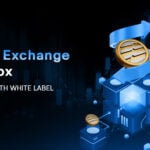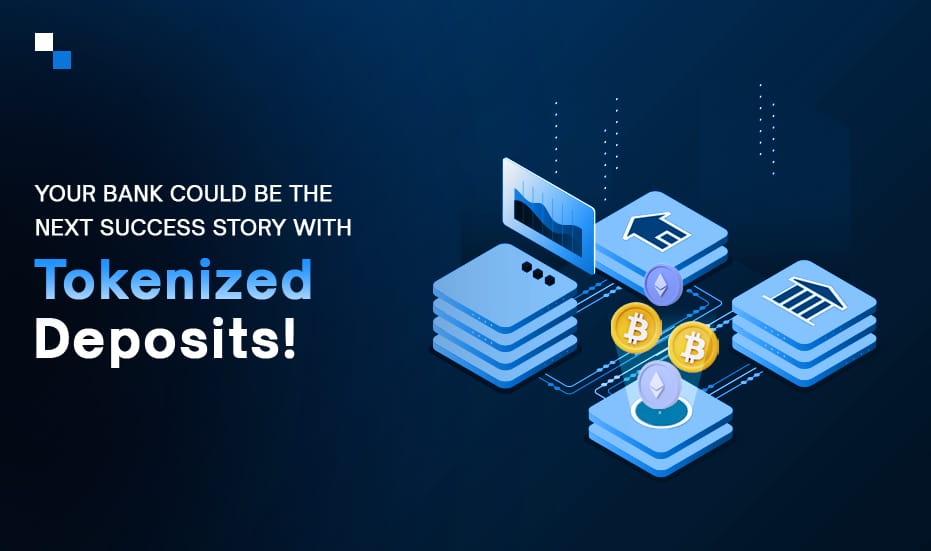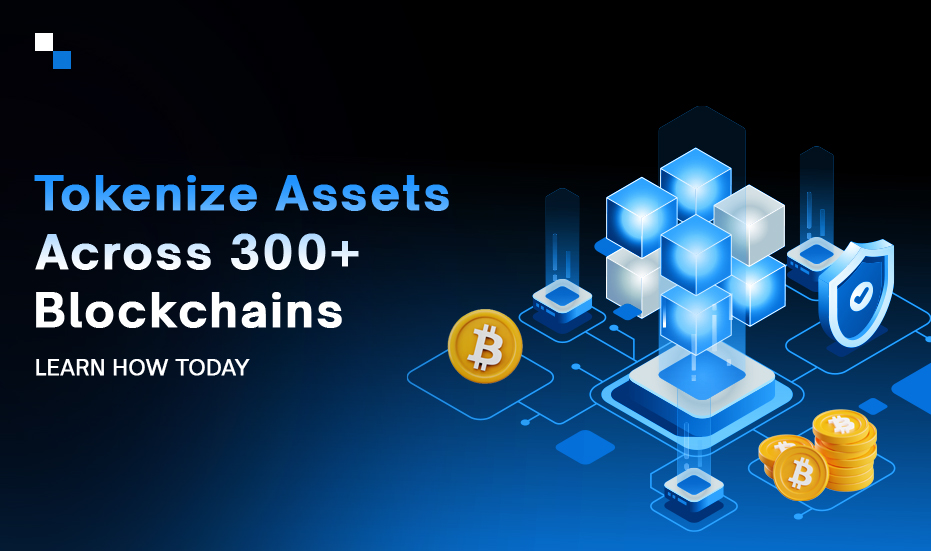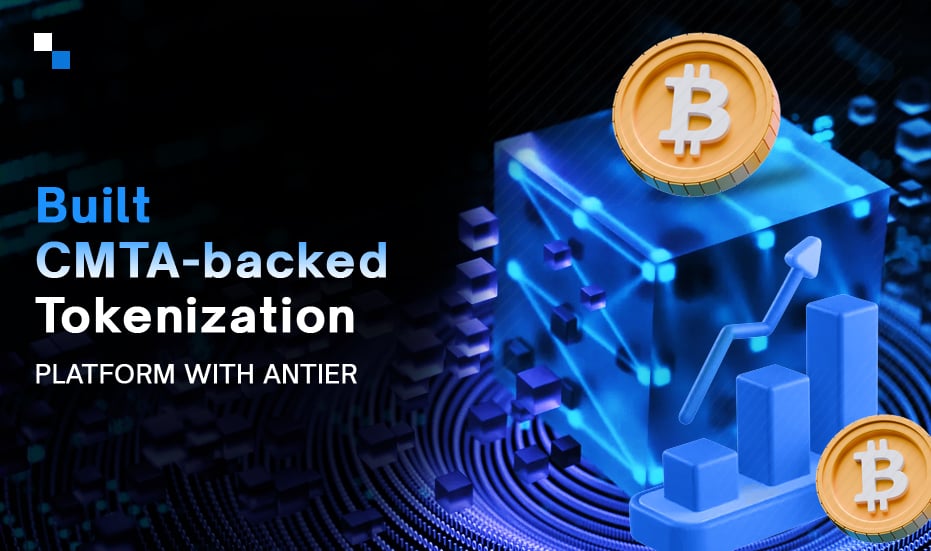
Metaverse-as-a-Service (MaaS) in 2025: The Complete Guide for Business Innovators
April 11, 2025
How to Build a Trading Platform Leveraging White Label Exchange on Aptos?
April 11, 2025While the traditional banking solutions remain disrupted due to limited capabilities, Tokenized Deposits are emerging as the promising solutions benefiting both individuals and businesses alike. It’s changing the way investors can access more liquidity while keeping their funds in the bank. The Tokenized Deposits Platforms are now changing how a bank’s treasury operates by sharing a seamless programmable experience.
This guide unlocks the scope of Tokenized Funds Platform Development and highlights how the banking industry and financial institutions can benefit from it.
Understanding Tokenized Deposit
A tokenized deposit is a financial asset that represents the regular bank deposit such as savings and checking account on Blockchain Infrastructure. These tokens can be further used for tracking the transactions and ownership records.
Tokenized deposits make fiat transactions more efficient, cutting out extra steps and offering more transparency and flexibility.
How Are Tokenized Deposits Different from Stable Coins?
Tokenized Deposits are the alternative to stablecoins. While both are designed to represent the currency digitally, they follow diverse approaches. The Tokenized Deposits represent the bank deposits, and Stablecoins are the digital tokens backed by Fiat Currency.
The stablecoin isn’t directly linked to the deposit itself; instead, its value is tied to the value of regular money (fiat) through reserves that back it. This small difference is important.
What Role Does a Tokenized Deposit Platform Play?
The Tokenized Deposit Platform enables the banks to stay competitive with a “secure, scalable, and compliant way to modernize deposit infrastructure through:
- Issuance systems for creating digital tokens representing deposits.
- Management dashboards for banks and financial institutions.
- Trading interfaces for investors and users.
- Compliance and regulatory reporting tools.
- Security protocols and authentication systems.
- Interoperability features for connecting with other financial systems.
Why Global Banks Need to Act on It Now?
Traditional Banks face mounting competition for deposits from fintech companies, challenger banks, stablecoins, and retail Central Bank Digital Currencies (CBDCs). Tokenized deposit platforms offer these institutions several advantages:
- Deposit Protection and Growth: Banks can retain existing customers while attracting new ones by offering innovative digital services through tokenization.
- Enhanced Treasury Management: Real-time liquidity optimization, automated cash positioning, and seamless fund transfers improve operational efficiency.
- Competitive Edge Over Digital-Native Banks: Traditional banks can match or exceed the speed and convenience offered by fintech competitors while maintaining their established trust and regulatory compliance.
- Preserved Credit Creation Capacity: By preventing deposit outflows to competing services, banks maintain their ability to provide loans and support economic growth.
Recently, the Swiss Banking Association coordinated a tokenized deposit project with twelve banks to introduce a tokenized Swiss Franc. Similarly, Citibank unveiled its “Citi Token Services” for institutional trade and cash management.
This demonstrates the growing adoption of this technology among established financial players.
How Does the Tokenized Deposits Platform Help to Serve Regular Customers?
By using the tokenized deposit platforms, investors and regular bank customers can access unprecedented banking services with enhanced features such as:
- Increased Liquidity: Traditional bank deposits often have restrictions on withdrawals or transfers. Through tokenization platforms, investors gain the ability to trade their deposit tokens 24/7 on various exchanges, significantly enhancing liquidity.
- Fractional Ownership: Investors can purchase fractions of larger deposits, lowering barriers to entry for smaller investors and enabling more diversified portfolios.
- Transparency and Security: All transactions on these platforms are recorded on immutable blockchain ledgers, reducing fraud risk and increasing transparency.
- Global Accessibility: Tokenized deposit platforms remove geographical restrictions, allowing investors worldwide to access banking services regardless of their location.
How To Create a Tokenized Deposits Platform?
A robust tokenized deposit platform combines several technologies to deliver its promised benefits:
Blockchain Infrastructure
The foundation of any tokenized deposit platform is its underlying blockchain infrastructure. Platforms may operate on:
- Public blockchains like Ethereum offer maximum transparency and interoperability.
- Private or permissioned blockchains like R3’s Corda prioritize security and regulatory compliance.
- Hybrid solutions that balance the benefits of both approaches.
The choice of blockchain infrastructure significantly influences the platform’s performance, security, and compatibility with existing financial systems.
Smart Contract Functionality
Smart contracts serve as the automated enforcers of rules within tokenized deposit platforms. They enable:
- Automated interest payments to deposit holders.
- Programmable terms for deposits with specific conditions.
- Customizable redemption processes.
- Automated compliance checks and reporting.
These self-executing contracts reduce manual intervention, minimize errors, and increase the efficiency of deposit management.
Interoperability Protocols
A distinguishing feature of leading tokenized deposit platforms is their ability to connect with other financial systems. This includes:
- Integration with traditional banking core systems
- Compatibility with other blockchain networks
- Connections to payment rails and settlement systems
- APIs for third-party service providers
Link to legacy systems via APIs to ensure seamless interoperability with traditional banking infrastructures and other digital asset systems within regulated frameworks.
Security and Compliance Features
Given the sensitive nature of financial deposits, robust security, and compliance features are non-negotiable for tokenized deposit platforms:
- Multi-layer encryption for data protection
- Advanced authentication systems
- Regulatory reporting automation
- Audit trails for all activities
- Know Your Customer (KYC) and Anti-Money Laundering (AML) Tools
New Financial Possibilities for Banks to Unlock with Tokenized Deposits
Tokenized deposit platforms enable several innovative use cases that weren’t possible with traditional banking infrastructure:
Intraday Repo and Liquidity Management
By connecting tokenized deposits with tokenized asset networks, banks can implement intraday repurchase agreements (repos) with true atomic settlement. This means cash and collateral are exchanged simultaneously, reducing counterparty risk and enhancing capital efficiency.
Cross-Border Payments and Remittances
The wholesale payments market is projected to grow by 6% from 2022 to 2027, reaching a predicted revenue of $645 billion. Tokenized deposit platforms are well-positioned to capture a significant portion of this market by offering faster, cheaper international transfers compared to traditional systems like SWIFT.
Programmable Money and Conditional Payments
Tokenized deposit platforms enable “programmable money” – deposits that can be programmed to behave in specific ways under certain conditions. This opens possibilities for:
- Automated supplier payments when delivery conditions are met
- Scheduled recurring payments with built-in adjustments
- Escrow services with automatic release triggers
- Dynamic interest rates based on market conditions

What Does the Tokenized Banking Future Hold?
The tokenized banking solutions have tremendous potential for growth. Several trends are likely to shape its evolution:
Regulatory Clarity and Standardization
As governments and regulatory bodies develop clearer frameworks for digital assets, tokenized deposit platforms will need to adapt. Recent developments like the repeal of SAB 121 in the United States indicate a trend toward more tokenization-friendly accounting rules, potentially accelerating adoption.
Convergence with Traditional Banking Systems
Rather than replacing traditional banking entirely, tokenized deposit platforms are increasingly positioning themselves as extensions of existing systems. This hybrid approach acknowledges the strengths of traditional banking while introducing blockchain-based innovations.
Enhanced Interoperability Between Different Platforms
As the ecosystem matures, interoperability between different tokenized deposit platforms will become increasingly important. Projects focusing on cross-platform compatibility and standards will likely gain prominence.
Take Away
Tokenized deposit platforms represent the infrastructure layer that will power the next generation of banking services. By bridging traditional finance with blockchain technology, these platforms offer benefits to all stakeholders in the financial ecosystem – from banks looking to modernize their services to investors seeking greater flexibility and access.
Create, Launch, and Brand Your Tokenized Deposits Platform with Antier
Partner with Antier to build a secure, scalable, and compliant Tokenized Deposits Platform. Simplify Intra bank treasury, stay competitive, and unlock the new revenue streams. Our solutions will help you enhance customer engagement with real-time liquidity optimization, seamless fund transfer, and automated cash positioning that compliments future banking needs.



